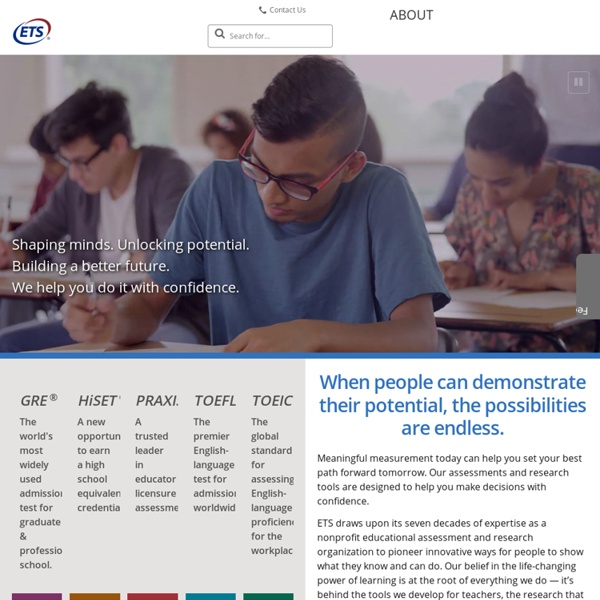



Measurement Incorporated ® ~ Excellence in Assessment™ At Measurement Incorporated, we can extend to our clients a range of assessment technologies that will cater to their unique needs. In addition to the performance assessment scoring techniques for which we are highly respected industry wide, we offer scoring services that include online and automated scoring technologies. Perpetually researching and developing new technologies, we enhance our ability to provide rapid turnaround of reliable assessment results. These computer and online-based scoring technologies include Online Testing and Automated Essay Scoring. сайт Группы Советских войск в Германии EDFIN Percentage distribution of total revenue for public elementary and secondary education in the midwest United States, by revenue source: 1989–90 and 2008–09 U.S. Department of Education, National Center for Education Statistics, Common Core of Data (CCD), "National Public Education Financial Survey (NPEFS)," fiscal years 1990–2001, Version 1b; fiscal year 2002, Version 1c; fiscal year 2003–2006, Version 1b; fiscal year 2008–2009, Version 1a. Use this site to get finance information on public elementary/secondary education.
Flashcard Exchange: The world's largest online library of printable flashcards Acuity - CTB/McGraw-Hill The Acuity College and Career Readiness Assessment Pilot—Earn up to $20 Per Student! Starting this May, diagnose your students' readiness in Grades 3–8 for the new summative assessments by applying for the pilot. 90-minute assessments include both online and paper/pencil sessions. Earn up to $20 per student and receive actionable reports to understand how well your students are prepared for the new summative assessments. Site officiel du musée du Louvre CTES The National Center for Education Statistics' (NCES) Career/Technical Education (CTE) Statistics system derives data about career/technical education primarily from existing NCES surveys. Some of the most informative data in the CTE Statistics system are from high school transcript data.This method of obtaining data provides a more accurate and complete picture of participation in career/technical education than can be obtained by other means. The CTE Statistics system also uses data from NCES' surveys of postsecondary students and institutions, surveys of secondary schools and faculty, and longitudinal surveys that track secondary and postsecondary students through schooling and into the labor market.
ECLS The Early Childhood Longitudinal Study (ECLS) program includes three longitudinal studies that examine child development, school readiness, and early school experiences. The birth cohort of the ECLS-B is a sample of children born in 2001 and followed from birth through kindergarten entry. The kindergarten class of 1998-99 cohort is a sample of children followed from kindergarten through the eighth grade. The kindergarten class of 2010-11 cohort is following a sample of children from kindergarten through the fifth grade. The ECLS program provides national data on children's status at birth and at various points thereafter; children's transitions to nonparental care, early education programs, and school; and children's experiences and growth through the eighth grade.
B&B The Baccalaureate and Beyond Longitudinal Study (B&B) examines students’ education and work experiences after they complete a bachelor’s degree, with a special emphasis on the experiences of new elementary and secondary teachers. DataLab Under law, public use data collected and distributed by the National Center for Education Statistics (NCES) may be used only for statistical purposes. Any effort to determine the identity of any reported case by public-use data users is prohibited by law. Violations are subject to Class E felony charges of a fine up to $250,000 and/or a prison term up to 5 years. NCES does all it can to assure that the identity of data subjects cannot be disclosed.
NAAL The 2003 National Assessment of Adult Literacy is a nationally representative assessment of English literacy among American adults age 16 and older. Sponsored by the National Center for Education Statistics (NCES), NAAL is the nation's most comprehensive measure of adult literacy since the 1992 National Adult Literacy Survey (NALS). In 2003, over 19,000 adults participated in the national and state-level assessments, representing the entire population of U.S. adults who are age 16 and older, most in their homes and some in prisons from the 50 states and the District of Columbia. Approximately 1,200 inmates of federal and state prisons were assessed in order to provide separate estimates of literacy for the incarcerated population. By comparing results from 1992 and 2003, NAAL provides the first indicator in a decade of the nation's progress in adult literacy.